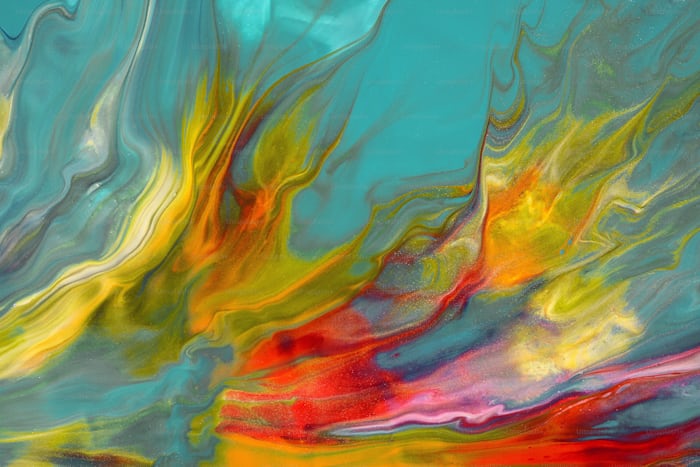Color is more than just a visual experience—it’s an emotional and psychological force that can shape the way we feel, how others perceive us, and how we express ourselves to the world. The colors we wear, surround ourselves with, and even decorate our spaces with have the power to evoke confidence, vibrancy, and authenticity. But how do you harness this power? How do you find the shades that truly resonate with you, reflecting your inner self while boosting your outward energy?
This article delves into the profound impact of color on our emotions and self-expression and explores how you can select hues that make you feel confident, vibrant, and true to yourself.

The Psychology of Color
Color psychology is the study of how colors influence human behavior, emotions, and decision-making. Each color carries its unique psychological and cultural associations. For instance:
- Red: Often associated with passion, energy, and power. It can make you feel bold and assertive.
- Blue: Known for its calming and trustworthy qualities, blue fosters feelings of peace and stability.
- Yellow: A cheerful, uplifting color that exudes optimism and creativity.
- Green: Linked to nature, growth, and balance, green promotes harmony and renewal.
- Black: A color of sophistication and authority, black often symbolizes mystery and elegance.
Understanding these associations can be the first step in intentionally using color to enhance your mood and self-confidence.
Personal Connection to Color
While general associations are helpful, your personal relationship with color is equally important. Think about the colors that make you feel alive and at ease. For some, vibrant oranges and yellows may ignite energy, while for others, soft pastels like lavender or mint green might evoke a sense of calm.
Tip: Take note of how you feel when you wear certain colors or spend time in spaces dominated by particular hues. Do you feel invigorated in a red dress or grounded in an earthy brown sweater? Your instincts often reveal the colors that align with your personality.
The Role of Color in Clothing
Clothing is one of the most direct ways to incorporate the power of color into your life. The colors you wear can affect your mood, confidence, and even how others perceive you.
1. Colors and Confidence
When you wear colors that align with your personality and skin tone, you exude confidence. For instance, warm tones like deep red or mustard yellow can make you appear more approachable and energetic. On the other hand, jewel tones like emerald green or sapphire blue can convey sophistication and elegance.
2. Colors for Different Occasions
Consider the message you want to send through your clothing:
- Professional settings: Neutral tones like navy, gray, and black convey professionalism and reliability.
- Social gatherings: Bright colors like coral, teal, or magenta can make you appear more approachable and lively.
- Relaxed environments: Soft hues like beige, sky blue, or sage green create a laid-back, calm impression.
3. Signature Color
Developing a signature color—a shade that feels uniquely “you”—can enhance your personal brand and boost your confidence. This could be a bold crimson, a serene aqua, or even a versatile neutral like ivory.
Color and Emotional Vibrancy
Beyond clothing, the colors you surround yourself with in your environment also impact your emotional state. Your home, workspace, and even the digital spaces you engage with can benefit from thoughtful color choices.
1. Home Decor
- Living Room: Energize communal spaces with warm and inviting colors like terracotta, golden yellow, or olive green.
- Bedroom: Opt for restful, calming shades like lavender, soft gray, or blush pink to promote relaxation.
- Kitchen: Uplifting colors like sunny yellow or pastel turquoise can inspire creativity and cheerfulness.
2. Workspace
A workspace dominated by colors like blue or green can enhance focus and reduce stress, while accents of orange or red can boost energy and motivation.
3. Seasonal Color Shifts
Changing the colors in your environment with the seasons can also keep your surroundings feeling fresh. For example, incorporate warm tones like burgundy and pumpkin in fall and crisp whites and icy blues in winter.
The Science of Skin Tone and Color Matching
Finding colors that suit your skin tone is key to looking and feeling your best. Here’s a quick guide to determine which hues work for you:
1. Cool Undertones
If you have cool undertones (pink or blue hues in your skin), jewel tones like sapphire, emerald, and ruby will complement your complexion. Cool pastels like lavender and icy blue are also flattering.
2. Warm Undertones
Warm undertones (golden or peachy hues) pair beautifully with earthy shades like mustard, olive, coral, and chocolate brown. Warm metallics like gold and bronze are also striking.
3. Neutral Undertones
Neutral undertones (a mix of warm and cool) can pull off a wide range of colors, from soft beiges to vibrant reds and greens.
Using Color to Express Your True Self
Color is a language, and it can be a powerful tool for self-expression. Here’s how to use it to reflect your identity:
1. Experimentation
Don’t be afraid to experiment with unexpected colors. If you usually gravitate towards neutral tones, try incorporating one bold piece like a fuchsia scarf or a cobalt blue jacket.
2. Mood Dressing
Let your mood guide your color choices. Feeling powerful? Opt for red. Need tranquility? Blue or green might be your best bet.
3. Cultural and Personal Significance
Incorporate colors that hold personal or cultural significance. For instance, wearing traditional colors from your heritage can create a sense of pride and connection.
The Transformative Power of Color Therapy
Color therapy, or chromotherapy, is an alternative healing practice that uses colors to balance energy and improve well-being. Each color is believed to emit a specific vibration that can affect your physical and emotional health:
- Red: Stimulates energy and passion.
- Blue: Promotes calmness and serenity.
- Yellow: Encourages mental clarity and creativity.
- Green: Balances and restores harmony.
While not scientifically proven, many people find incorporating these colors into their lives beneficial for improving their mood and mental clarity.
Steps to Curate Your Color Palette
Here’s a practical guide to creating a personal color palette that makes you feel confident, vibrant, and authentic:
- Self-Reflection
Think about the colors you naturally gravitate towards and how they make you feel. - Color Analysis
Determine your skin tone, hair color, and eye color to identify shades that complement your physical attributes. - Mood Board
Create a visual representation of your favorite colors using tools like Pinterest or by collecting fabric swatches and photos. - Wardrobe Edit
Evaluate your current wardrobe and identify gaps in your color spectrum. Slowly introduce new colors through accessories or statement pieces. - Home and Workspace
Reimagine your spaces with colors that align with the energy you want to cultivate.
Conclusion: Color as a Superpower
Color is one of the most accessible and transformative tools for enhancing your confidence and expressing your authentic self. Whether through your wardrobe, your surroundings, or even your creative pursuits, embracing the power of color can uplift your mood, energize your spirit, and help you feel more aligned with who you truly are.
As you embark on your color journey, remember that there are no rules—only the colors that make you feel most alive. By choosing hues that resonate with you, you can create a world that reflects your vibrancy, confidence, and unique personality.



